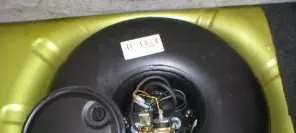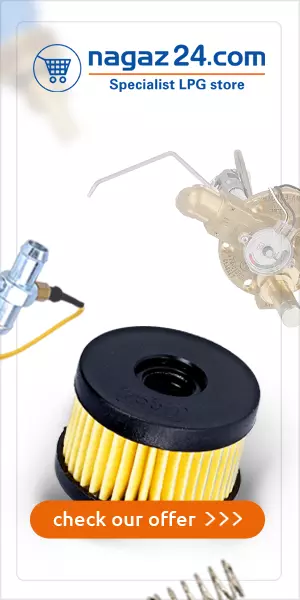- Main page
- Search
- Up to date
- Products
- Technology
- Vehicles
- Video
- Conversion Payback Simulator
Port Injection - Conversion Payback Simulator
Direct Injection - Conversion Payback Simulator
Diesel - Newsletter
Safety of LPG tanks
 loading results...
loading results...The regulations also include other conditions that have to be fulfilled in order for the LPG tank to be used. These include tests that are conducted on randomly selected units from every batch. The tests are very demanding and they guarantee the tank’s safety. They include:
- tests on materials and welds: samples are taken from randomly selected tanks for quality testing. In addition, the finished product is also X-rayed for any potential defects,
- burst tests: one in five hundred tanks is filled in until it bursts. This way the testers obtain information about the quality and durability of the welds and materials, as well as the safety reserve. According to the regulations, the pressure value at break is approximately 67 bars (operating pressure of the tank is 5 – 17 bars, depending on the conditions). Tanks manufactured by leading companies can withstand 110 – 120 bars. The tests also check the rate and degree of the tank’s expansion up until the moment it bursts,
- fire test: a gas-filled tank is placed in the flame with a temperature of over 600° C. Before that, heat and pressure sensors are placed on the tank. The tank is supposed to be emptied through its security system without bursting. Under normal conditions, the gas will find its way out and burn off outside the tank. Only after completing the two tests (burst and fire tests) the manufacturer will obtain a homologation for the tank.
LPG tank manufacturers also conduct additional tests in order to enhance the safety margin even more:
- fatigue test: the tank is repeatedly filled and emptied. Its aim is to simulate the wear of the tank in 25 years. The verification period given by The Office of Technical Inspection is 10 years. Even after such tests, the tanks manufactured by leading companies retain their original features and are fully functional,
- crash test: it tests what happens to the tank during an accident. The tank collides with a solid metal barrier (smooth or convex) at 50 km/h. The only visible effect of such collision is the tank's dented surface. The tank remains leak-proof,
- shooting test: the most drastic of all the tests, one that shows the safety reserves of the LPG tanks best. Some manufacturers conduct such tests. Filled tanks are shot at with 9 mm bullets. You’ll be disappointed if you expect a Hollywood-style effect – if the tank is shot through, gas escapes through bullet holes until the tank is empty.
Because random checks, although very detailed, can’t offer a 100% assurance that all devices are fully operational, each tank after leaving the production line is tested for leaks. It’s filled at a pressure of 30 bars, which is 2-6 times higher than the average working pressure.
In addition to lab tests, independent organizations conduct practical research on the behavior of tanks during road accidents. The German automobile club ADAC performed crash tests on an Opel Astra with a tank placed in the spare tire well. A second car crashed into the back of the car, simulating a common road crash that affects 70% of the car’s width. LPG tank deformed, but the collision didn’t cause the smallest leakage not only in the tank, but also in the whole gas system. Next, the car was set on fire and thermal cameras were used to observe the process of releasing fuel. It was burnt off safely and in a controlled way when the whole car was up in flames anyway. Apart from the fire, there was no additional threat. Video footage from ADAC's tests can be viewed on the internet. Similar test has also been conducted by gazeo.com.
You have nothing to fear but the fear itself. Anxiety over LPG tanks often comes from insufficient knowledge. When you dig a bit deeper on this subject, it turns out the devil’s not so black as he’s painted. A properly fitted and responsibly operated autogas system in a car is not more dangerous than windscreen washer.
You may also find these interesting:
 loading results...
loading results...







